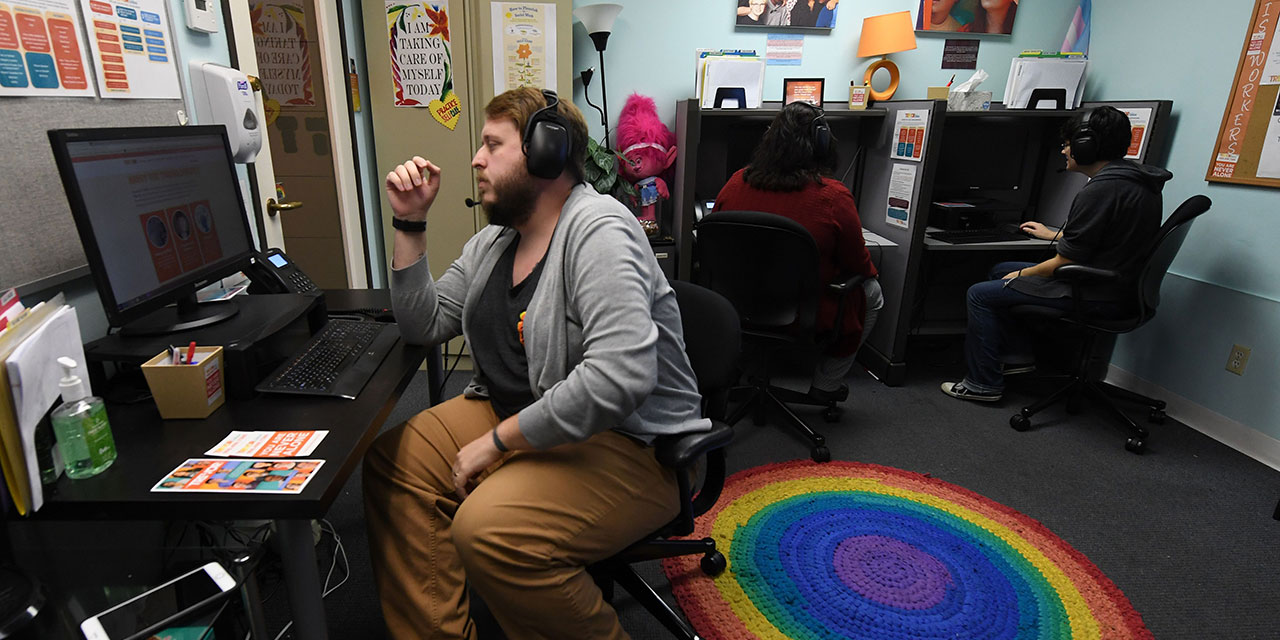The Great Demographic Illusion: Majority, Minority, and the Expanding American Mainstream, by Richard Alba (Princeton, 336 pp., $29.95)
A few weeks ago, Variety published a short news item about the cat-eyed beauty Anya Taylor-Joy after she won a Golden Globe for her starring role in The Queen’s Gambit, a Netflix series. The piece was entirely forgettable, but one bit got my attention. An italicized correction at the end of the article read: “A previous version identified Anya Taylor-Joy as a person of color. She has said she identifies as a white Latina.” Two questions: a person of color? Unless my television needs adjusting, Taylor-Joy is alabaster pale. “White Latina?” According to Wikipedia, the actress’s father is of Scottish heritage. But her mother is part English and part Spanish, and the family lived in Buenos Aires during her early childhood. That explains it . . . I guess.
Finally, a reason to check your email.
Sign up for our free newsletter today.
Richard Alba’s new book, The Great Demographic Illusion: Majority, Minority, and the Expanding American Mainstream, helps untangle identitarian knots of this sort. The City University of New York sociologist and immigration scholar shows how official policies have, intentionally or not, distorted America’s debates about racial and ethnic identity as well as the country’s self-understanding. Alba is clearly a man of the Left, but readers will still come away questioning important parts of conventional progressive wisdom.
The author begins by recalling a series of reports from the Census Bureau during the 2000s that announced that the United States was well on its way to becoming a “majority minority” country. The announcement was clickbait. The Left met it with barely disguised celebration, seeing a satisfying comeuppance for those anti-immigrant bigots on the wrong side of history and anticipating the end of oppressive white dominance. For its part, the provincial (as opposed to cosmopolitan) Right, having already been sucker-punched by globalization, responded to the news with what columnist Charles Blow called “white extinction anxiety.” Alba implies that the two sides fed off each other: hearing words like “extinction” and sensing the schadenfreude from the other side, this portion of the white Right grew more brazenly resentful, which, in turn, lent more credence to the Left’s charges of right-wing racism. The rest is Trumpian history.
Thankfully, Alba is more interested in the majority-minority claim than in the president who proved adept at exploiting it—and, as his title foretells, that claim is illusory. Ten percent of all married people now have a partner of a different race or ethnicity, he finds; likewise, more than 10 percent of babies born in the United States have mixed parentage. Fully 80 percent of those polyglot children have one non-Hispanic white parent. Yet official Census data categorize those children as minorities even when they identify as white.
This little-understood accounting trick shows just how much seemingly small political-bureaucratic decisions shape public perception, not to mention Twitter wars. As the country’s mixed-race and ethnic population grew, complaints about the check-one-race instructions became harder to ignore and officials began to consider adding a mixed-race option. According to the author, civil rights groups, fearing a loss of clout in anti-discrimination cases, strongly objected to the idea. A compromise was reached just in time for the 2000 census: yes, mixed-race Americans could check more than one box (usually meaning white and a racial or ethnic minority), but mixed-race people would still be counted as minorities. “Just as with the one-drop rule” that had once applied to blacks, Alba observes acidly, “the minority side was to take precedence over the white side.” It’s worth noting, though Alba does not, that college-admissions offices also appear to use the one-drop rule when it advances their diversity goals.
To be fair to the bureaucrats, the question of how to categorize population groups was bound to be a difficult one, given the demographic churn of the United States. This was especially true after the 1965 Hart-Celler Act abolished earlier immigration quotas for non-Europeans. Up until the mid-nineteenth century, the Census designers didn’t think very hard about race; they defined Americans as either free people, which generally meant “white,” or slaves, synonymous with “black.” It was only in 1860 that officials added a separate category—for American Indians. By the end of the century, both Chinese and Japanese had made their way onto the checklist; Filipinos, Koreans, and “Hindus,” as Indians were categorized, arrived a few decades later. In the 1960s, activists introduced “Asian-American” as a gesture of empowerment and solidarity with other nonwhite people. As an official classification, the term is problematic, to say the least; it packs proudly disparate groups, such as Chinese, Thais, Indians, and Filipinos, into one. Officials compromised by providing checkboxes for six of the largest ethnicities as well as a box marked “Other Asian” for smaller ones. There is also a separate box for “Native Hawaiian and Pacific Islander.”
Hispanics, by far the nation’s largest minority group, have also been a consistent headache for Census demographers. Unlike blacks or Asians, Hispanics are not a racial group and can be black, white, or (part) Asian. In the early days, Mexicans were simply written down as “white” on Census forms. In 1930, the bureau decided to give Mexicans their own racial classification. The gesture didn’t go over well. Both the Mexican government and Mexican-American leaders insisted that they be classified as white and the bureau returned to the status quo ante. Then, just as it had for Asians, the civil rights movement of the 1960s changed Hispanic attitudes. Seeing strength in numbers, Mexican and Puerto Rican activists lobbied for a new shared designation; after 40 years of minor adjusting, the entry now appears as “Spanish, Latino, or Hispanic origin.” Why Asians identify themselves through their country of origin and Hispanics do not is unclear.
Hispanics are not only the largest ethnic group but also one of the most likely to intermarry. About 40 percent of all recent intermarriages and mixed births involve a Hispanic of any race and a non-Hispanic white; mixed-race children are likely to marry whites, further diluting their Latino “blood.” (In one of a number of gestures toward wokeness, Alba uses the gender-neutral label, “Latine,” now popular among LGBT activists.) In large measure due to intermarriage, such “ethnic attrition” has been common among Hispanics over generations, particularly among educated Mexicans. Pew estimates that 11 percent of those with Hispanic origins don’t identify as such.
And Hispanics are not alone in this process of attrition. Asians, particularly well-educated ones, very commonly marry whites. (Those couples are far more likely to be Asian female–white male than the other way around.) More surprisingly, given their geographic isolation, over half of Native Americans intermarry. The children of American Indian and white parents are far more likely to identify as white than as Indian. Seventy percent of white–American Indian and white–Asian children eventually marry white Americans. The trend diminishes tribal numbers and threatens the federal benefits that sustain them.
So how can our Babel of a country adapt to all this? Alba examines two ways of thinking about the question. The first—and, on the left, the most entrenched—is critical race theory. CRT theorists argue that whites, relying on assumptions of their innate racial superiority, enslaved, colonialized, and ruled people of color for centuries and continue to dominate minority populations in both the U.S. and throughout the West. If they’re right, then barring a profound break with a racist past, the U.S. will continue to be a country where white supremacy reigns.
Alba believes that this model does not accurately describe what’s happening in American life. The children of new immigrants of nonwhite descent are becoming socially integrated into a shifting mainstream; they are moving up in education, income, and class status, and they vote in large numbers, just as previous major waves of immigrants did. In the post–World War II era, a rapidly expanding economy eased the assimilation of formerly excluded Jews and Italians. Growing numbers of white-collar jobs and new housing developments made it possible to have what Alba calls “non‐zero‐sum” upward mobility; no group had to lose in order for another to rise. Today, he argues, something similar is happening as baby boomers age out of the labor force, making room for immigrant newcomers. More than half of new Ph.D.s are from immigrant-origin groups. Top corporate positions have diversified.
This is not assimilation in the conventional sense. Minorities are not being recruited into a white power structure, as critical race theorists describe in the case of earlier Southern and Eastern European immigrants. “Assimilation” implies that a minority group melds into the majority and becomes part of a homogenized whole. Instead, Alba argues, immigrants and their children are joining a mixed, visibly nonwhite mainstream and changing that mainstream in noticeable ways. Groups are “de-categorizing” themselves or, as in the case of “white Latina” Anya Taylor-Joy, blurring familiar boundaries.
Blacks are the one exception. They remain more segregated than other minority groups. They intermarry at lower rates and, even when they do intermarry, they tend to stay among their own. They are more likely to describe themselves as black, to have black friends, to remain closer with their black family than their white one, and to have children who go on to marry other blacks. They are not complete outliers to the assimilation model; their intermarriage rates have risen significantly, if from a lower base. Moreover, middle-class and higher-income blacks tend to live in integrated neighborhoods. But their movement into the mainstream has been slow and piecemeal. They are not reaching top jobs to the same extent that immigrant-origin groups are. While elite colleges have seen their immigrant numbers soar, the African-American numbers have barely budged since 1980; those who do enroll are disproportionately from African-immigrant families. While more blacks are getting college degrees, half come from lower-ranked, for-profit institutions.
Alba is somewhat coy about the depth of his challenge to the current regime of identity politics. In a rational world, his book could help clear our toxic air of the promiscuous use of terms like “white supremacy” and “people of color.” I’m not counting on it, though. The Wall Street Journal ran a profile of the author, but The Great Demographic Illusion has not been reviewed by any major news outlet since its September publication. It seems that many Americans prefer their illusions.
Photo: wildpixel/iStock




